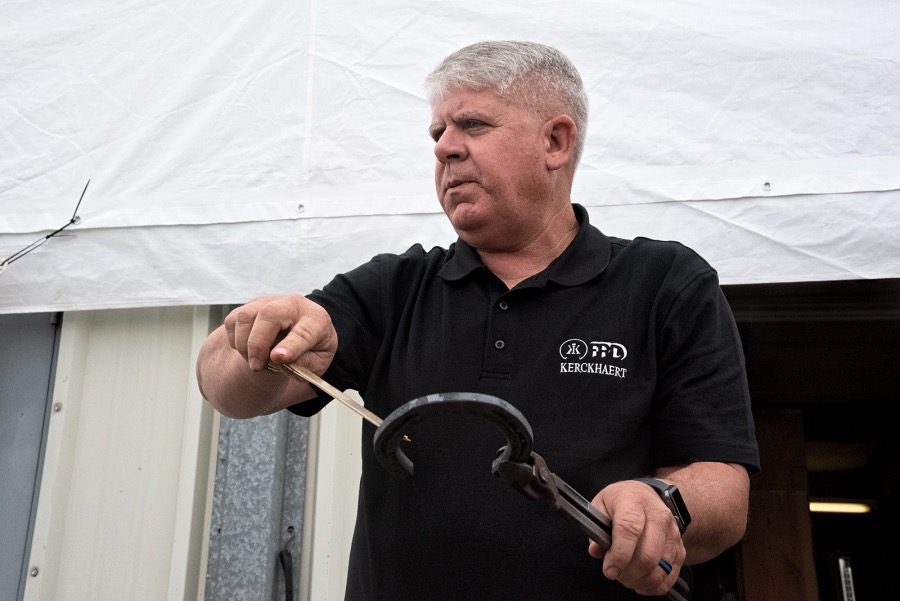Farriers tend to label themselves with the disciplines of the horses that they shoe. While it’s beneficial to have a firm grasp on the horses’ hoof-care needs, Hank Chisholm, CJF, of Lucedale, Miss., urges caution about identifying too closely with labels.
“I do all kinds of horses from $1 million show hunters to those that aren’t $1 million shoe hunters,” the American Farrier’s Association president told attendees during a clinic at 3B Farrier Supply in Valley, Neb. “I do a lot of barrel horses. Some of them are not great, but they stand still and pay. Some of them are world-class. Parrish, Fla., farrier Robbie Hunziker said it best when someone asked him, ‘What kind of horses do you shoe?’ He said, ‘Mostly brown ones.’ It doesn’t matter. Shoeing is shoeing.”
Yet, Chisholm also urges farriers to remain focused on the importance of the job.
“We owe everything we do to the horse,” he says. “Someone asked me, ‘What’s the most important horse you ever shod?’ I said, ‘The one I’m working on now.’ I don’t care how much the horse is worth. You can have the $2 million hunter that the groom is bringing to you because you don’t see the owner. I have worked for some owners for 25 years and I’ve never met them. Then, I’ve got an 8-year-old girl who has a $32 sale barn pony that means more to her than the lady I’ve never met with the $2 million hunter.”
Keep it simple. Farriers make their money by performing a proper trim and fitting a flat shoe. Don’t make it any more complicated than that, Chisholm suggests.
“I think the goal is being overlooked,” he says. “Some of it just simply has to do with, ‘I think I need to fix something that’s not broken. Our job as farriers is to take a normal, healthy horse foot and not turn it into a therapeutic case.”
Trimming feet. Chisholm is a self-described fanatic when it comes to trimming feet. While learning about hoof care never stops, he has little patience for a specific mistake.
“If you’re in my truck, you’ll get one shot to draw blood on a horse’s foot by trimming too much,” he says. “I’m not going to say much to you other than, don’t do it again. Here’s why, it’s too easy to figure out how much is too much.”
Chisholm also doesn’t buy excuses about where the horse lives and the effect it has on feet.
“I’ve had the pleasure of working from California to the East Coast, and South Florida to Canada,” he says. “People think that horseshoeing is the same everywhere, but it’s not. The horses’ feet are not the same. The styles of shoeing differ. Everyone has their theory, and I base mine on anatomy. I believe that God made the horse. I’m pretty handy, but I’m not quite that handy, so I don’t see us making them better. I do see us making things go south. Edgewood, N.M., farrier Craig Trnka once said, ‘I’ve never seen a foot get stronger by taking it away.’ It’s pretty simple.”









Post a comment
Report Abusive Comment